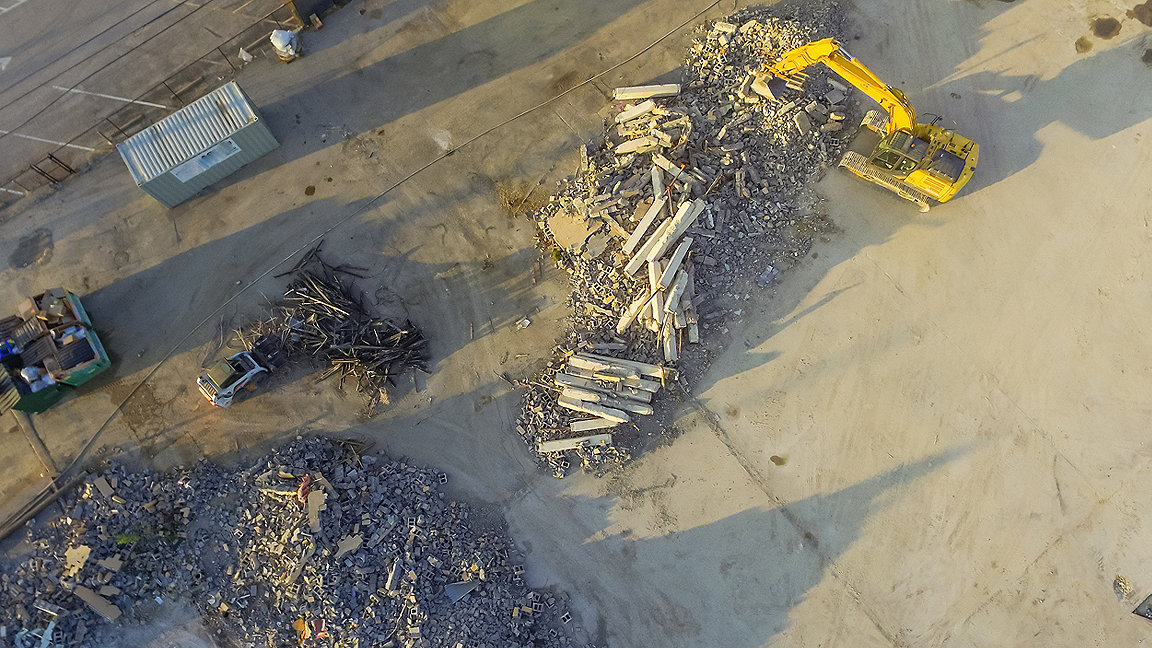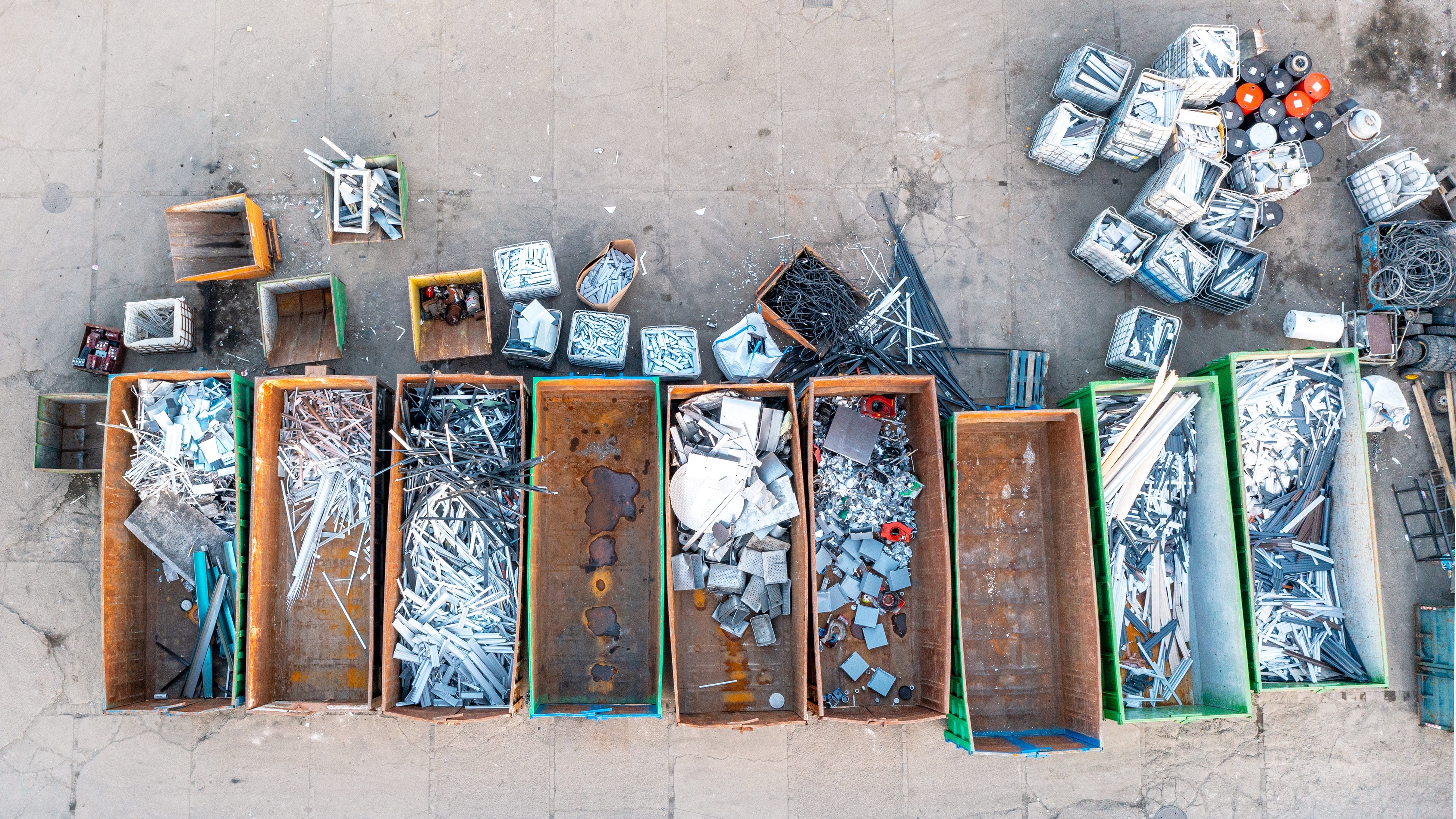
How much does the waste in a skip actually cost you, or your client?
That may not be a question you are often asked. Although you probably know how many skips are used on your sites – and the associated hire costs – this is possibly secondary to the panic induced by working out how to reduce your waste-related carbon footprint to zero.
To help address these questions in a user-friendly way, researchers at Glasgow Caledonian University's Built Environment Asset Management (BEAM) Research Centre were commissioned to develop a digital tool for Zero Waste Scotland.
Waste disposal entails range of costs
Consider the cost of materials that eventually end up in skips, then add on the labour costs for transporting them to those skips. This may require use of a hoist for vertical movement, a telescopic forklift for horizontal transport on larger sites, or perhaps both.
But here's the killer question: why has it ended up in the skip? If the answer relates to, for example, wrongly specified materials or a wall built in the wrong place, then replacement materials are required, including the time and cost of procurement for a second occasion.
In the latter case, there is also site labour required to extract and replace the materials if the error is discovered after incorporating them into the works.
It is important to acknowledge that these are all extra costs that only arise because waste has been generated.
Estimating tool developed from site data collection
BEAM developed the Construction Waste Indicative Cost (CWIC) tool over a period of three years, looking at a total of 12 sites in the civil engineering and commercial and residential building sectors.
The aim was to estimate how much it cost for contractors to fill their skips, as well as identify in detail what materials had been disposed of, and why they were deemed waste in the first place.
First, site-based personnel filled in a spreadsheet by observing skips on each site. This spreadsheet has been streamlined as much as possible to reduce data input time, with indicative algorithms calculating costs based on average distances from working areas to the skips.
It also asks simple questions on whether the waste materials need replacing or have already been incorporated into the works.
Material types are chosen from a two-tier drop-down list, which allows indicative material and labour costs to be calculated automatically.
Contractors are not generally keen to share such cost information, so these costs have been estimated using a combination of price books, materials catalogues and builders' merchants, with trade discounts applied.
As at June 2022, the average total cost of materials in a skip of eight cubic yards (6.1m3) in capacity was £1,900. However, the tool allows individuals to update unit prices with their own figures.
The most obvious measurement for waste is volume, based on observable dimensions. Therefore, a measuring tape is recommended for site personnel estimating volumes, as well as personal protective equipment.
Ascertaining why this waste has arisen, though, needs input from the operative placing the waste in the skip – which is a problem if attempting to automate observation with a camera.
Conversation with other members of the site team is therefore recommended as well, after initial data collection, to determine the root cause of the waste.
For effective comparison, collecting accurate data on a minimum of 5m3 of waste is recommended before such conversations; this figure allows for an average amount of air between materials in a 6.1m3 skip. A running total of volume is shown on the spreadsheet to support this process.
Inputting data into a handheld device is the best option, with a protocol and user guide for doing so available on the Zero Waste Scotland website.
Immediate results can inform decision-making
The CWIC tool offers an immediate output. First, a breakdown of all related costs is automatically generated in a table, supplemented by pie charts showing waste by volume, weight, source and condition.
The 5m3 sample is a proxy measure of volume for an eight-yard skip, but the table will also scale up the total if the skip is a 40-yarder (30.6m3), which are more typically used on site.
The weight estimate is particularly useful as this in turn allows the carbon count for different materials to be estimated, and supports reporting of such data.
The source of the waste is meanwhile essentially a summary of why it has found its way into the skip.
Although this does not suggest how to reduce the amount, it can enable informed decisions about how to address any excess because, for example, contractors would know how much was due to damage on site, to the designer or client changing their mind, or to manufacturer defects.
There are any number of tools on the market to help standardise dimensions or optimise production. But until you know what is contributing most to your waste, why spend good money if it will only affect a negligible portion?
The CWIC tool allows you to make informed, targeted decisions for more efficient and effective waste reduction.
Waste calculator could reduce landfill
Regardless of your role in the construction industry, sustainable development and carbon reduction are ever more pressing requirements, and waste minimisation can help achieve more sustainable use of resources and greater cost efficiency.
Materials found in a skip not only represent resources consumed inefficiently, with a detrimental effect on sustainable construction and development, but also entail the associated direct and indirect costs of labour, handling and procurement, all of which are paid for in the construction contract.
When applying a monetary rate to an item of construction work to be undertaken, standard practice is the inclusion of a waste allowance to be paid for by the project funders, though percentages vary from operation to operation and contractor to contractor.
Zero Waste Scotland is currently promoting the tool's use so data can be pooled for the nation's construction industry as a whole.
While the tool is currently a spreadsheet with supporting information including a protocol, user manual and case studies, the organisation is also considering developing it into a more comprehensive web-based app. However, the benefits to construction projects further afield are obvious.
Indicative waste cost calculated for housing development
Hogganfield Park is a 47-plot residential new-build development north east of Glasgow. The total floor-space of all housing is 4,523m2, with project value at £10.5m.
During data collection around 25% of plots were at an advanced stage, with foundations and superstructure being built from the north end of the site working south towards the skips.
The main contractor is a residential housebuilder, employing subcontracted tradespeople to undertake most of the site works. This main contractor has a site management team coordinating the subcontractors, providing skips and buying around 60% of materials for the build.
A basic site waste management plan is held in the contractor's electronic document management system.
Three 14-cubic-yard (10.7m3) skips are located to the south end of the site, with two for segregated plasterboard and timber waste and one for mixed. These are mainly filled from a mini skip mounted to a telehandler travelling from the main work areas, although some waste is transferred by hand.
When the research team arrived on site, waste was being carried from the main work areas about 20m to the mini skips, and around 55m by telehandler along a temporary road to the main skip compound.
Researcher logs amounts and condition
A researcher collected waste data for the CWIC calculator, helped by the assistant site manager over the course of three days. This began with an assessment of the travel distances, which allowed the drop-down menus on the CWIC set-up page to be completed using a tablet running Microsoft Excel.
After this, the data input tab was used to open the main spreadsheet for logging waste. The spreadsheet automatically adds European Waste Catalogue (EWC) codes, source categories – the reason the waste is in the skip – and dimensions in millimetres.
A similar objects column allowed items such as bricks, tiles and plasterboard offcuts to be grouped in one row each. The volume column automatically calculates how much waste has been logged, with a running total. For this site, the final total of 5.019m3 was in line with the optimum volume of 5m3.
The right side of the volume column records the condition of the waste as judged by the user, and two final columns to identify whether the waste materials had been installed then removed, or replaced by new materials.
If either of these are the case, then extra costs are added. On two occasions, materials were installed and then removed; namely, insulation and tiles that were respectively damaged and changed at the client's request.
Full skip could cost as much as £4,000
Table 1 gives an overview of the waste costs, automatically analysed by the CWIC calculator.
The 5.019m3 sample of waste was found to include £1,599.26 of purchased materials, excluding packaging, and other waste – in this case office chairs, which were not specifically bought for the project so do not generate a project purchase cost.
Table 1 also shows how much this costs per cubic metre, and extrapolates the figures for the size of skip.
Table 1 indicates that if the waste continues to fill the skip at this rate, then £2,788.23 of purchased materials will be thrown away. Total costs for the 14-yard skip are projected to be £4,020.95.
Table 1: Overview of waste costs. Note: costs in the first column reflect the fact that a 14-yard skip had been hired in this case
The CWIC calculator also produces charts showing various aspects of the waste sample. Figure 1 breaks down the material costs, showing where the money is being lost, mainly in the form of gypsum materials and insulation.
Even though there were separate skips for timber and plasterboard, the mixed one included a wooden pallet and sheets of plasterboard too contaminated for the segregated skips. The gypsum materials also included excess plaster, mixed on site.
Figures 2 and 3 show respectively the amount of waste in the sample, including packaging and other items with no project cost, by volume and weight.
These show that 33% by volume and 31% by weight of waste material in the sample is treated wood and plastic. The second largest type of waste is 'other', which includes office furniture.
Figure 4 shows the waste causes by volume. Besides the expected offcuts, wastes and packaging, the analysis shows that some materials such as bricks are disposed of due to damage, either on site or during delivery.
Excess plaster and cementitious materials, typically mixed in batches on site, accounted for 5% of waste in the sample.
Figure 5 shows that 52% of the sampled waste would need to go to landfill. While this is a subjective estimate, the analysis also shows that just less than 50% of the waste could be recycled.
The CWIC calculator focuses on waste being generated on site, but it is possible that the carrier receiving the waste may sort it at the transfer station afterwards. However, even where they do they only provide generic figures for this.
William Lindsay, health, safety and environmental manager with the developer, Lovell, said: 'We are always looking for initiatives to help us become more efficient as a business.
'The CWIC calculator will allow us to focus on the true cost of waste at an operational level and identify appropriate waste reduction measures, both now and for future developments.'
Prof. Billy Hare and Siobhan Morrison work at the BEAM Research Centre, Glasgow Caledonian University
Contact Prof. Hare: Email

